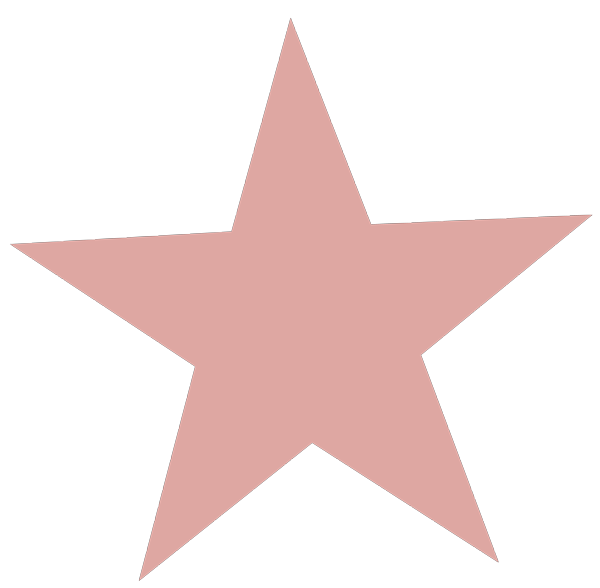By Chandra Turner
Editors come to me because they are looking for a next step out of traditional editorial — usually magazine media or digital journalism. But so often they can’t visualize the path ahead. I get it; it was fuzzy for me too when I made my own pivot. For most of us growing up in traditional editorial, our career trajectory was clear and the roles were too. We fell into the next job because of an internal connection or because we were at the just-right next step on the industry’s collective masthead. We blissfully lived oblivious to how careers advanced in the rest of the corporate world, outside of our advertising-supported editorial bubble.
Now that that bubble has all but burst, the options are unlimited. Which direction do you go? Which new industry do you move to? Where do you take your well-honed editorial skills? Suddenly every industry everywhere needs content — our industry is now every industry.
Let’s stop for a second and thank the gods for that: Editors are finally in demand again! Yes, the pool has gotten much, much bigger which can make it scarier. But it’s much more interesting and exciting. You have the chance to carve your own path into something that truly fits who you are and your skillset.
To make your path clearer, I’ve listed the adjacent content industries where editorial folk I know have found natural pivots (in some cases, I placed them there). Note that some of these “industries” are in their nascent stages and my definitions may not align perfectly with yours, your colleague’s, or your hiring manager’s. Most of these roles exist within consumer brands and corporations. The notable exceptions are startups, nonprofits, and agencies so I listed them separately even though the roles within those organizations are not mutually exclusive.
Take a look, be inspired; your second career is waiting for you!
 TYPES OF CONTENT INDUSTRIES
TYPES OF CONTENT INDUSTRIES
CONTENT MARKETING
This is the most popular next step for editors. Content marketing is storytelling that is editorial in nature. Oftentimes you’re writing, assigning, and/or editing content in the same way you have for traditional media. But instead of your end user being a simple reader, they are a consumer or potential consumer of a company’s product or service. You aren’t overtly selling that product or a service with your content (that is still called advertising). But your content is providing a positive rub-off effect. You are creating brand awareness, affinity, and ultimately shaping consumer opinion in your company’s favor. That content can be in print, digital short and long form, product copywriting, social media, podcast, video, you name it.
Featured Editors:
Alison Caporimo, Editorial Director, Chatbooks; former editor at Seventeen, BuzzFeed, and Reader’s Digest. She’s a Talent Fairy hire! Read our Q&A.
Alyssa Vitrano, Global Head of Brand and Content, GE HealthCare, former editor at YM. Read my Q&A with Alyssa when she was a content leader at IBM.
BRAND PUBLISHING
Brand publishing is a type of content marketing and my favorite new career path because it’s as close as you can get to traditional editorial. I love this definition from the consultancy firm Toolkits. (No surprise: it’s run by two former editors.) Brand publishing is what the name says: Brands acting as publishers. The way brands see it, why spend advertising or PR dollars on media companies to reach their consumers via quality content when they can create it themselves? It’s the long-game approach to content marketing. The brand is investing in building a content platform of its own (a magazine, a podcast, a separate website) to educate, inform, or entertain readers who will (in theory) become their consumers.
Featured Editor:
Tracy Middleton, Editorial Director, Hone Health, and former Editor in Chief, Yoga Journal and deputy editor, Women’s Health. She’s a Talent Fairy hire!
CORPORATE COMMUNICATIONS & THOUGHT LEADERSHIP
In the old days we’d simply call the department in charge of promoting the image of a brand the publicity or PR department. Now it’s much more multifaceted, complicated, and interesting. Editors help shape the stories about the company that go out into the world — either to other businesses / clients (b2b or business to business), to its own employees (ie., an internal magazine for a corporation’s 50K employees see category below!) to the larger consumer market (business to consumer) via marketing materials, magazines, digital feeds / websites, white papers, speech writing, talking points, op-ed writing, content partnerships, influencer marketing, etc.
Featured Editors:
Sara van Boven, Director of Enterprise Executive Communications at Johnson & Johnson; former editor at Allure and Newsweek
Sunny Sea Gold, Executive Editor, Insight at Toptal; former editor at Redbook, Glamour, and Ed2010 (!).
INTERNAL COMMUNICATIONS
You’re already familiar with the employee newsletter. But now internal comms are more sophisticated than ever. I like to think it’s because of all those former editors on the loose are eager to create quality content for anyone who’ll pay them. But I’m sure it also has a lot to do with the sheer size of companies these days. Some global corporations have the “populations” of small countries! Editors are stepping in to tell the stories of their employees and the brand itself via magazines, newspapers, websites, podcasts, and more. Some of those companies make this content multi-purpose so it’s accessible to the public, the consumer, and/or their clients. Of course this blurs the lines, making internal communications also brand publishing, content marketing, or thought leadership. (Did I mention this can be confusing?)
Featured Editors:
Carrie Sloan, VP of Content, Target; former Director of Global Content Lab, Johnson & Johnson and a former editor at Marie Claire, ElleGirl, and YourTango. Read my Q&A with Carrie.
Kara Corridan, Director of Communications at Prudential Financial, and former editor at Scholastic, Parents, and Modern Bride. Read my Q&A with Kara.
AFFILIATE MARKETING
Chances are good you’re already familiar with affiliate marketing. This segment of media has exploded in recent years — in some cases it’s what’s keeping traditional media companies alive. Affiliate marketing is content in the form of product reviews, gift guides, and how-tos that include purchase links to partner retailers (Amazon being the biggie.) When the reader clicks through a link, the publisher receives a small percentage of the revenue. Nearly every editorial outlet (and some brand publishing companies) creates affiliate marketing content (Hearst, Conde, Meredith-Dotdash, Vox-Group Nine, BuzzFeed are big players). Many have their own affiliate divisions and some even have their own stand-alone agencies: The New York Times has the Wirecutter; USA Today has Reviewed; CNN has Underscored. It’s a natural transition for many editors who have experience in market copywriting — especially consumer goods categories like beauty, fashion, food, and tech.
Featured Editors:
Mike Bruno, VP, CNN Digital Commerce; former editor at Billboard and Entertainment Weekly
Annemarie Conte, Deputy Editor at Wirecutter; former editor at Woman’s Day and Jane
 TYPES OF ORGANIZATIONS
TYPES OF ORGANIZATIONS
STARTUPS
Startups (thankfully) know how important content is to the viability of their business. But coming from the tech or business world, founders often don’t understand what (and who) it takes to produce high-quality, engaging content. Or they aren’t resourced enough (yet) to have the luxury of hiring multiple content roles. As a result, editors at startups tend to wear many hats. You may be hired for content marketing but end up handling anything that involves words — internal comms, media relations, thought leadership, social media marketing, podcast script writing …. Startups can be great for career pivotors — you get to experiment with different types of content roles and learn by doing. But true to their reputation they can also be relentless, exhausting, and time consuming. Of course, the same is true for many traditional media roles. Many editors have made the transition and found startups easier in some senses — yes, you work hard. But you also get to be the expert in the room and build something the way you want from the ground up.
Featured Editors:
Margarita Bertsos, Head of Content, Base; former editor at Redbook and Glamour
Casey Lewis, Head of Content, 776 venture capital; former editor at Teen Vogue and The Cut; founder of Clover Letter — a Talent Fairy hire!
Sara Angle, Senior Editorial Manager, Peloton, former editor at Shape and SELF
NONPROFITS
Many editors got into journalism in the first place to make a positive difference in the world. So it’s not surprising that nonprofit work is enticing as a second career. Yes, the pay tends to be lower (or more in line with traditional editorial), but the rewards can be great, especially if you are working for an organization that is aligned with a personal passion or cause. Most of these roles are content marketing, traditional marketing, PR, or media relations roles. At smaller organizations your role may be more startuppy in the sense that you could be doing a variety of roles. The one thing I do hear is the pace can be frustratingly slow for some editors who are used to tight deadlines and fast decision making. Of course, as always, it depends on the leadership.
Featured Editors:
Dore DuHaime, Director of Marketing & Communications, Girls on the Run; former freelance writer and staff writer at People
Mary Hickey, Director of Communications & Outreach, Women’s Power Gap; former editor at Glamour, Parents, Newsweek
o
MARKETING AGENCIES
Agencies can create all types of content for their clients — it’s usually considered “branded content” if its distribution is via an editorial outlet (either one the agency owns or one it partners with) and is “content marketing” if its distribution is via the client itself (its own website, social, or other platform). Editors gravitate to these roles because they long for creating highly resources, multi-platform editorial projects like they did in the golden years of editorial. For many that is the case. But agencies are still agencies; even if they call the content “editorial,” the client’s needs and wants can be superior to those of the reader, which can be a hard adjustment for purists.
There are two main types of marketing agencies:
Those that exist within a media company aka “brand studios” or “in-house agencies” partner with clients — often consumer goods companies, fashion and beauty brands, pharmaceutical companies, and financial institutions — to create content that looks and feels like editorial, but is labeled (or should be!) as “sponsored.” These brand studios exist in nearly every large media company: Hearst’s is HearstMade; Dotdash-Meredith’s is The Foundry 360; The NY Times’ is T Brand Studio.
Then there are what in the olden days we called “advertising agencies” or “PR firms” and now are often called “full service agencies“. They have smartly expanded to include a variety of services including content strategy and execution, brand strategy, social media marketing, influencer marketing, SEO, and more. The big difference between them and the in-house studios is that they don’t own the distribution channel. They partner with media companies to distribute the content, or the content is “published” by the brand itself (i.e., their website, social media or app). Sometimes they even work with the in-house brand studios to distribute the content (so many layers!). You’ll recognize the biggies (Edelman, Ogilvy, McCann etc.) but there are plenty that are more niche and focus primarily on content marketing such as Manifest, Huge, and Masthead Media.
Featured Editors:
Brett Mirsky Hill, Head of Branded Content, HearstMade; former editor at HGTV Magazine, Mademoiselle, and Marie Claire.
Didi Gluck, VP, Editorial, Manifest; former editor at More, Shape, and Real Simple. Read my Q&A with Didi.
I’m absolutely certain that I have gotten something wrong in here at some point — or I could have explained it better. I welcome your edits and suggestions. I also welcome your additions: I’d love to add more names of editors to this list as well as more ideal next-step companies and industries to include. Truly, this list is just the beginning of all the places editorial talent can thrive.




